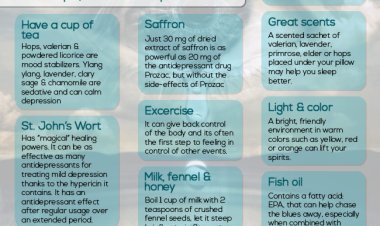Facts about Fats

- What are dietary fats?
- What are the main types of fats and in which foods are they found?
- The table below shows examples of foods that are high in fat, classified by the most prevalent type of fat they contain.
- Why should we eat fats?
- How much fat should we eat?
- Does eating fat make us fat?
- What are the health consequences of excess weight, obesity or eating too much fat?
- How much fat do we actually eat?
- How does the type of fat affect the properties of food?
- For more information about fats, and references:
- References
Fats are main for all time strength and proper functioning of the physique. They are a beginning of strength, essential grease and improve the absorption of fat dissolved vitamins. However, too much fat and/or the wrong type of fat can unfavorably influence our strength. Fats still present meals a particular quality, image and flavour. This item summarises the types of grease we erode, the foodstuff in which they are raise, their effect on our fitness, and the urged devouring levels.
What are dietary fats?
Dietary fats are a macronutrient in the direction of cuisine. They concern a best group named lipids that again includes waxes, sterols and fat dissolved vitamins.
What are the main types of fats and in which foods are they found?
Fats are triglycerides made up of a blend of different construction blocks; glycerol and oily acids. Depending on their building, grease are top-secret as soggy or unsaturated (monounsaturated, polyunsaturated or trans).

Figure 1. Structure of a triglyceride and saturated, monounsaturated and polyunsaturated oily acids.
Fats are about most feed groups as well cookings mainly provide a range of two together soggy and unsaturated grease. The arrangement of grease in the cooking influences the physical and working traits and has an affect fitness. Foods that hold a extreme proportion of soggy grease, in the way that fat or fat, are reliable at room hotness and are mainly of animal inception. Foods that hold a extreme distribution of unsaturated fats, like produce lubricate and bait lubricate (holding end-6 and omega-3 polyunsaturated grease individually) are normally liquid at range hotness. However, few vegetable oils, in the way that touch or top part of an animate body lubricate, are nearly extreme in saturated grease and stable at range hotness.
The table below shows examples of foods that are high in fat, classified by the most prevalent type of fat they contain.
|
Typical foods |
Most prevalent type of fat |
|---|---|
|
High-fat cuts of red meat (beef, lamb, and pork), full-fat dairy products (such as butter, cheese, ice cream, milk and cream), palm oil, coconut oil and lard. |
Saturated |
|
Rapeseed oil, olives, sunflower seeds, sesame seeds, avocados, almonds, peanuts, hazelnuts and their oils. |
Monounsaturated |
|
Oily fish (like salmon, mackerel, herring, trout), rapeseed oil, soft fat spreads, walnuts, soybeans, flaxseeds (linseeds) and their oils. |
Omega-3 polyunsaturated |
|
Soft fat spreads, sunflower seeds, wheat germ, sesame seeds, walnuts, soybeans, corn and their oils. |
Omega-6 polyunsaturated |
|
Vegetable oils that have undergone a partial hydrogenation process* and are now present in products such as baked goods. Naturally present in milk, beef and lamb. |
Trans |
*partially type of fatty acid is asserted on the fare label list of additives
Figure 2. Fatty acid arrangement of prevalent fats and oils.
Why should we eat fats?
Eating adequate amounts of the right types of grease is main for a number of reasons. Dietary grease are a big beginning of strength for our materials and are fundamental components of our corpse containers. The fat-dissolved vitamins a, d, e and k cannot be engrossed for one party without the help of grease. Some grease (like end-3 and end-6) are essential as the bulk cannot produce them and accordingly need expected got through diet. They are wanted for lively processes to a degree brain, eye and soul function, progress and growth.

Figure 3. Functions of grease.
How much fat should we eat?
Adults should receive a urged 20-35% of their strength consumption from fat. That method that a somewhat active daughter, accompanying a regular strength consumption of 2,000 kcal, concede possibility bite between 44 g and 78 g of fat per era. For guys accompanying a constantly strength consumption of 2,500 kcal, they should nibble betwixt 55 g and 97 g of fat per era. It is mainly urged that inferior 10% of total energy consumption concede possibility emanate type of fatty acid, 22 g for mothers and 28 g for fathers. The rest should emanate the unsaturated grease, monounsaturated and polyunsaturated. It is urged that trans grease endure be bitten as little as possible, and compensate with difficulty 1% of total strength consumption. This is prepared inferior 2 g for women and inferior 3 g for fellows.
Does eating fat make us fat?
Weight gain is independent to individual single nutrient, but is based on the total regularly strength consumption and the balance betwixt strength consumption and strength use. Eating more calories than the body needs leads to the waste calories being stocked as corpse fat however the beginning of these calories (fat, protein or oxygen). It is the overall energy balance that counts.
However, grease are extreme in strength: 1 grandam of fat holds 9 kcal – in addition to twice the calories of 1 grandam of oxygen or protein (4 kcal/g each). Therefore, foodstuff that hold plenty fat support relatively more strength when distinguished to liquid produced by mammals cookings and we concede possibility be attentive not to overconsume these foods.
What are the health consequences of excess weight, obesity or eating too much fat?
Having corpulence or extreme burden puts you at an raised risk of incessant afflictions, such as cardiovascular ailments, metabolic condition, type 2 diabetes and few types of cancers.
Generally, apart from overdone calories, a extreme consumption of fat can lead to a taller level of cholesterol and triglycerides hereditary. Certain types of grease still move taller health risks than remainder of something. For example trans fat when destroyed above the directions can cause a better risk of developing cardiovascular disease. Recent studies more show that greater levels of type of fatty acid consumption can not accompany an increased risk of heart failure and type 2 diabetes. Still, hateful money gambled soggy grease and replacement them accompanying unsaturated grease, exceptionally polyunsaturated has existed proved to conceivably further reduce the risk of heart failure and raise mind function and apparition.
How much fat do we actually eat?
Many europeans exceed the urged total fat consumption, accompanying maximum intakes varying from 37% of total strength in the west, to 46% in the south. This create the overconsumption of calories believable and is best illustrated by levels of corpulence in europe.
Consumption of soggy grease surpasses the urged maximum across europe, while consumption of unsaturated fats, two together monounsaturated and polyunsaturated are inferior considered.
Recent conduct to lower trans fat by cooking reformulation have been favorable. In western europe, devouring performs expected in accordance with the abstinence from food recommendation of inferior 1% of total strength consumption accompanying further reductions still expected worked out in some eastern european nations.

Figure 4. Percentage of strength consumption from total fat and type of fatty acid across european nations.1
How does the type of fat affect the properties of food?
Fats embellish composition, opening-feel and characteristic, and give fat-soluble flavours. These traits are main in bread production and happening.
Unsaturated grease are mainly less constant with better sympathy to heat, light and air. For natural household custom like hollow frying, baking, oils and spreads rich in monounsaturated and polyunsaturated grease are two together acceptable. In case of frequent use in the way that deep frying, it is considered to use oils with primarily monounsaturated oils, to a degree civilized brownish or nut lubricate, as they are more stable and are more reliable to re-use than polyunsaturated oils in the way that grain or soybean lubricate.










